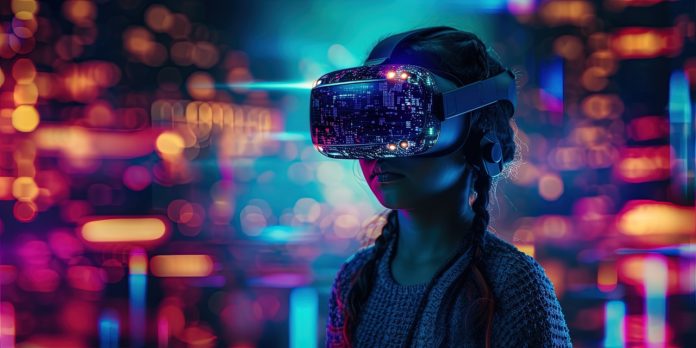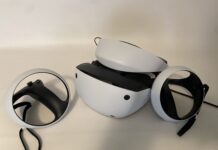Over the years, Apple has managed to revolutionize a number of otherwise boring devices into something truly extraordinary. The most recent example is the Apple Watch, which other tech companies have struggled to find success with. But Apple will really need to pull a rabbit out of their hat with the latest device. The Apple Vision Pro is a major gamble for the company, and there are some glaring reasons that it will fail spectacularly.
1. People Can’t Afford a $3,500 VR Headset
Apple may use the term “Spatial Computing,” but the reality is that the Vision Pro is an advanced VR headset that is dramatically more expensive than competing devices. In contrast, the Meta Quest 3 is $500, which is a much more palatable price point for a niche device.
The Vision Pro was also released at a time when consumers were clawing back their spending from pandemic highs as inflation ravaged budgets. Even so, few people would likely want to purchase the headset even if the economy was booming. With the advances in technology, many people believe Apple will release a more affordable version in the near future. Therefore, there isn’t a fear of missing out for consumers.
2. There Isn’t Enough to Do With the Vision Pro
Apple has teased some of what the Vision Pro can do, but headset owners are struggling to use it in their daily lives. Users can obviously watch movies and even work as if they were using a MacBook, but these aren’t groundbreaking features. Conversely, games are seen as the main selling point of a VR headset, but that really isn’t the case with the Vision Pro.
There is some confusion as to what someone should purchase a Vision Pro for. Gaming doesn’t really make sense because of the cost, and nearly every other task can easily be done with a much cheaper device.
3. The Vision Pro Is Uncomfortable
An overarching problem with all VR headsets is comfort. The Vision Pro may be one of the more comfortable headsets on the market, but that doesn’t mean it’s perfect. The head strap is comprised of a single band that holds the headset against a wearer’s head.
The user’s face can easily start to hurt after wearing a VR headset for a prolonged period of time. Another issue is that people who wear glasses must spend additional money on special lenses since their glasses will not fit inside the bezel. Finally, weight is a factor as the headset really starts to weigh down on the wearer’s face. Apple tried to reduce the weight by implementing a separate battery pack, but that created its own issues.
4. Carrying a Corded Battery Pack Is Unrealistic
An ongoing problem with VR headsets is the need for a battery, and the Vision Pro is no exception. Standalone headsets like the Meta Quest have a battery pack in the headset itself, but the Vision Pro uses a separate battery pack attached to the headset via a cable.
The battery in the headset doesn’t work well because the added weight makes wearing it painful after a while. However, the corded battery pack is equally unrealistic. Firstly, you need an empty pocket to hold the battery. Then, you have to worry about the cord, which easily gets annoying when using hand gestures. Battery technology is improving rapidly, so future Vision Pro headsets will hopefully find a better alternative.
5. High Likelihood of Accidental Damage
Despite having an aluminum frame, the Vision Pro is very much susceptible to breaking. You’ve likely seen videos shared online of broken Vision Pro headsets. The device’s weakest link is, by far, the exterior display. The curved glass is prone to breaking if dropped, which in turn damages the screen.
The exterior display is one of the main reasons that Vision Pro buyers should get optional AppleCare+ coverage. The headset’s size and external battery also make it difficult to store and carry. For instance, you shouldn’t throw it in a backpack.
6. Cheaper Headsets Prove People Are Not Interested in VR
Despite many “tech experts” touting VR as the future for nearly a decade, there has been little adoption by the general public. The biggest hurdle for Apple’s Vision Pro is its insanely high price tag.
Cheaper VR headsets offer great quality in the $500 price range. However, these headsets have largely failed to achieve widespread adoption by average consumers. Even Sony’s PSVR2 hasn’t sold nearly as many units as the company expected. The Meta Quest 3 actually has a high percentage of active users, but still far from what many would consider a life-changing shift in the way people use technology.
7. More App Developers Need to Get on Board
Making games and apps for VR is undoubtedly complicated compared to traditional software development. Managing unique controls with hardware limitations is certainly a balance. However, there is still a major shortage of VR content.
There are a growing number of companies making VR games, but some are outright terrible. Apple may need to put forth some effort to “vet” games before they go to the App Store. Other apps are also needed, especially on the Vision Pro. The good news is that the Vision Pro has ample processing power, but there are few apps that take full advantage of it. It would be really nice to see some apps that lean more heavily on education or other unique experiences.
8. No Concise Uses
Thinking back to the early days of computing, companies often designed devices to complete a specific task or fill a need. However, VR headsets do not fill a need in the market; instead, they try to fill a hole that doesn’t exist.
Tech doesn’t always have to suit a need, as many advancements are simply improvements, for instance, larger storage space or better displays. However, new devices really benefit from solving a problem as consumers see them filling a void. The fact that even gamers are reluctant to adopt VR is awfully reminiscent of 3D TV technology, which also had no real value.
9. Technology Will Continue to Improve
VR technology is improving quickly, and Apple’s Vision Pro is leaps and bounds better than the competition. Apple has already announced that the Vision Pro will not get a successor for a while. That means by the time Apple’s next VR headset releases, other competitors may have already entered the market with better features. Nobody expects the first-generation Vision Pro to sell a remarkable number of headsets, but rapid technological advancements mean Apple may get left in the dust.
10. The Vision Pro Sucks the Humanity Out of Socializing
One of the key differences between Apple’s Vision Pro and every other VR headset on the market is its external display. The display is designed to keep the wearer connected to the people around them. However, that display cannot replace the fact that people desire to socialize with the environment around them.
Numerous Vision Pro owners have complained about the lack of connection to the outside world when wearing the headset. When wearing a conventional VR headset, socialization really isn’t a concern, as most people use them at home for entertainment. However, Apple’s desire to make the Vision Pro a device people wear outside the house is unique. An undesired consequence is that wearers are always viewing the real world through a screen, further blurring the line between reality and the virtual world.








